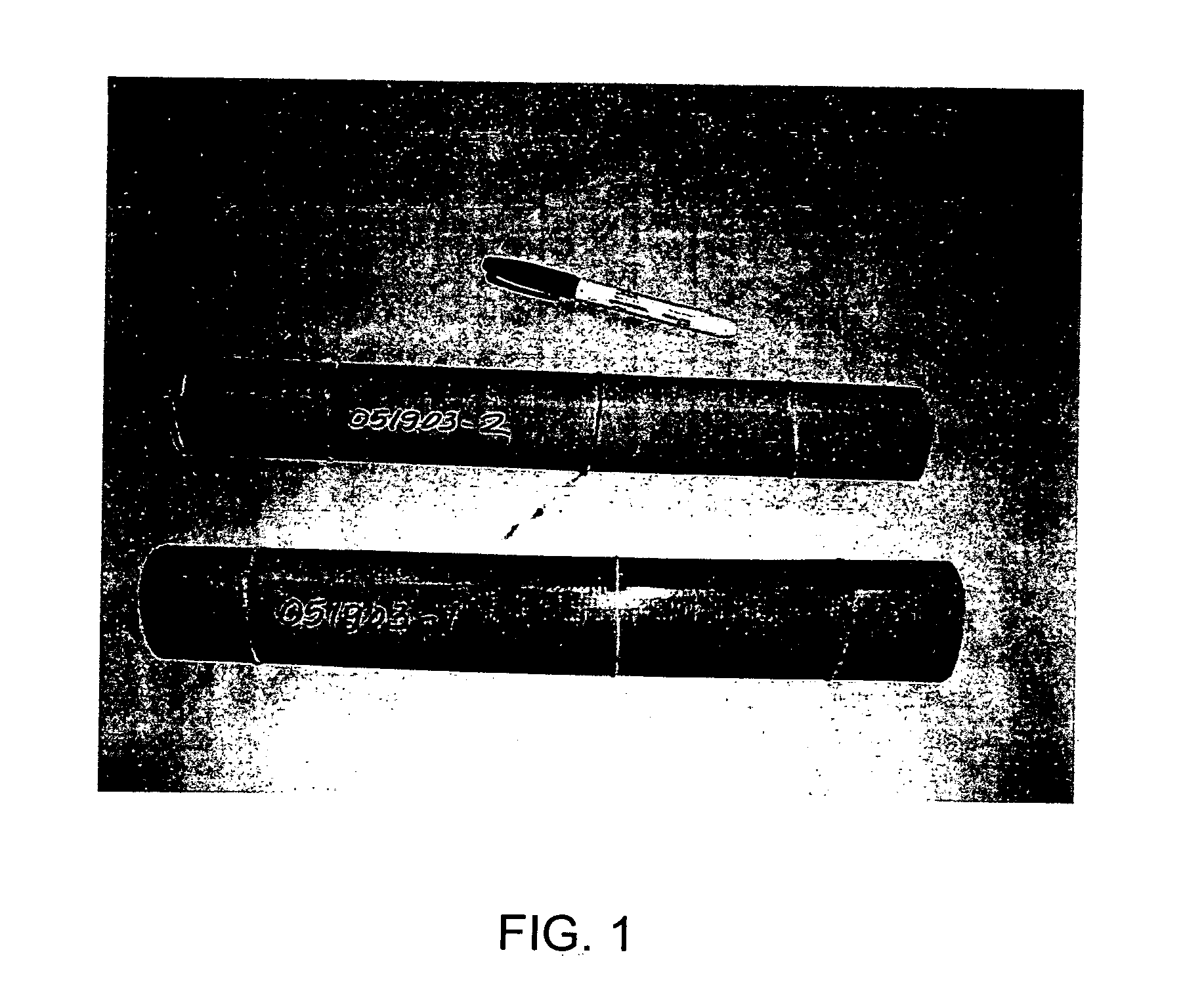Flexible and rollable cementitious membrane and method of manufacturing it
a cementitious membrane and flexible technology, applied in the direction of flooring, synthetic resin layered products, solid waste management, etc., can solve the problems of cracking and breaking of the finish surface, additional damage, and softening of the substrate, and achieve good moisture resistance and moisture durability, good tolerance to damage, and flexible and resilient
- Summary
- Abstract
- Description
- Claims
- Application Information
AI Technical Summary
Benefits of technology
Problems solved by technology
Method used
Image
Examples
example 1
[0051] A slurry was made from the components from Mix 1 of Table 1. No water in addition to that contained in the liquid polymer was added to form the slurry.
TABLE 1ComponentTrade NameMix 1Class C Fly AshBayou66.8%Portland cement0Water0Acrylic Polymer LatexForton VF77432.8%PolycarboxylateAdva Cast 0.3%SuperplasticizerColorantAjack Black 8044 0.13%%
[0052] All of the above components were placed in a high-shear blender and blended for 30 seconds to form a slurry. The resulting slurry was applied by trowel as a coating on SMS Laminate. The resulting product was allowed to dry for two hours and was subsequently rolled into a cylinder 1″ (2.5 cm) in diameter.
example 2
[0053] Another cementitious membrane was made by again mixing the components of Table I and applying it to SMS Laminate. The resulting coated product was transferred to a 210° F. (99° C.) oven for three minutes. Subsequently, the soft, flexible membrane was removed from the oven and rolled less than 4 minutes after the slurry was applied to the basemat.
example 3
[0054] Two flexible membranes were manufactured using a bi-directional mesh basemat made of polyvinyl chloride coated fiberglass. The mesh had an open and porous structure with 9 fiberglass yarns per inch, running in both the warp and weft directions. The two hydraulic compositions of Table II were each applied to a piece of this basemat.
TABLE IIMix 1Mix 4Ingredient(wt %)(wt %)Class C Fly Ash (Bayou)66.7962.42Water0.006.70Acrylic Polymer Latexa (Forton VF774)32.7430.59Polymer solids content - 51% and Water content - 49%Polycarboxylate superplasticizer (Adva Cast)0.340.16Colorant (Ajack Black AJ 61)0.130.13
[0055]FIG. 1 shows a photograph of the two membranes using the fiberglass mesh basemat. As shown, the fiberglass mesh was completely coated and embedded with the fly ash composition of the invention. Flexibility and foldability of the finished product is shown by the tight rolls less than 1″ (2.54 cm) in diameter (compared to the pen, also shown) into which the membrane is rolled...
PUM
| Property | Measurement | Unit |
|---|---|---|
| thickness | aaaaa | aaaaa |
| flexible | aaaaa | aaaaa |
| weight | aaaaa | aaaaa |
Abstract
Description
Claims
Application Information
 Login to view more
Login to view more - R&D Engineer
- R&D Manager
- IP Professional
- Industry Leading Data Capabilities
- Powerful AI technology
- Patent DNA Extraction
Browse by: Latest US Patents, China's latest patents, Technical Efficacy Thesaurus, Application Domain, Technology Topic.
© 2024 PatSnap. All rights reserved.Legal|Privacy policy|Modern Slavery Act Transparency Statement|Sitemap

